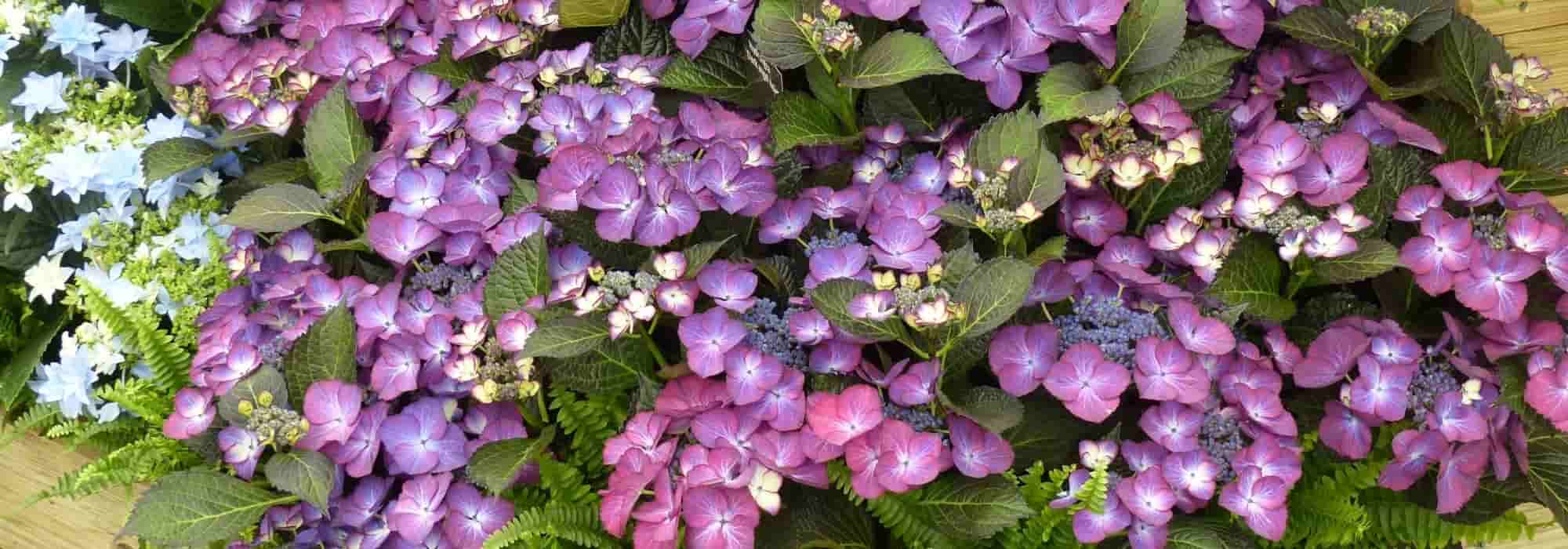
7 purple flowering shrubs
Discover 7 stunning colourful varieties
Contents
Colourful flowers of shrubs add character to the garden, attracting the eye of the gardener and pollinators. Purple, although subtle, is sublime, especially when highlighted by sunlight or in partial shade. This soft hue pairs perfectly with contrasting and brighter colours like yellow or with shades of pink and mauve. Planting shrubs with purple flowers allows for splashes of colour in a border that will catch the eye and enhance other shades. Discover our selection of 7 bushes with purple flowers, to plant in borders or as stand-alone specimens, to enchant the garden.
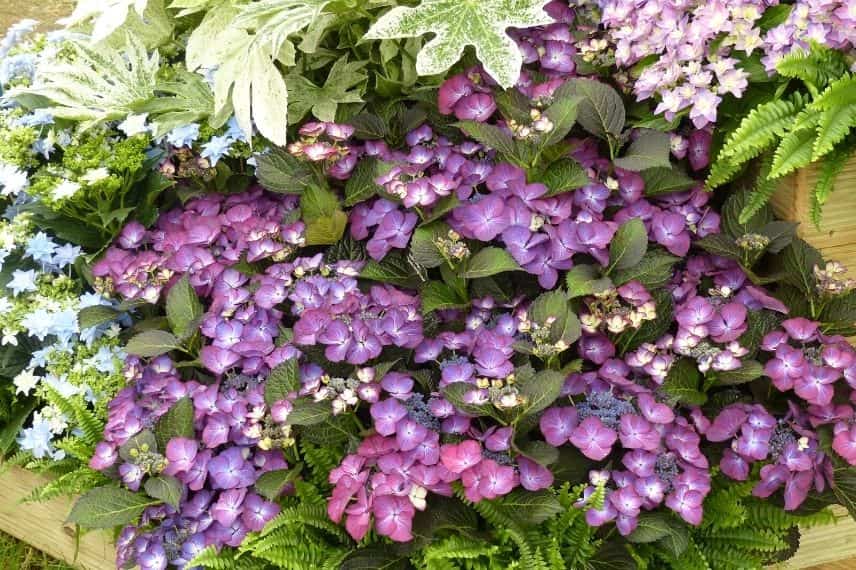
Hydrangea macrophylla ‘Kardinal Violet’
Buddleja davidii 'Argus Velvet'
With its beautiful, flexible, almost weeping habit, the Buddleja davidii ‘Argus Velvet’ combines grace with natural charm. Its lovely branches are adorned with spectacular panicles of flowers, forming long violet spikes that butterflies adore. This early variety blooms from June until the end of September and has the particularity of not self-seeding chaotically. Very hardy and easy to grow, it adapts to all types of well-drained soils, even poor or clay-limestone soils, and can tolerate occasional drought.
This beautiful shrub is the ideal candidate for a natural, country-style garden of any size, in full sun or light partial shade. With its 1.5m in all directions, this Buddleja will make a statement whether planted alone, in a container, as a hedge, or in a border alongside roses, a Clematis ‘Little Mermaid’, or a Viburnum.

Buddleja davidii ‘Argus Velvet’
The shrubby veronica 'Heartbreaker'
The Shrubby Veronica ‘Heartbreaker’ is an astonishing little shrub whose evergreen foliage will dazzle you with a variety of colours throughout the seasons. Indeed, its slender leaves are green variegated with cream white and tinged with purple during the summer, while the cold of winter will darken the foliage to a deep purple, marginate with rosy white. Additionally, the Hebe ‘Heartbreaker’ will provide a beautiful flowering from May to July in the form of light purple spikes.
Frost-sensitive below -10°C, this lovely shrubby veronica thrives in the mild climates of the Atlantic and Mediterranean, where it will tolerate sea spray. With a compact size of 60 cm in all directions, it can also be grown in pots, especially in other regions to be sheltered during winter. This surprising variety is perfect for adding a splash of colour all year round to the garden, in a rockery or on a slope, in rather rich, even calcareous, well-drained, light, and fairly cool soil. It will appreciate being planted in full sun or partial shade, alongside a buddleia, an Escallonia, a Ceanothus, an Artemisia, and Agapanthus.
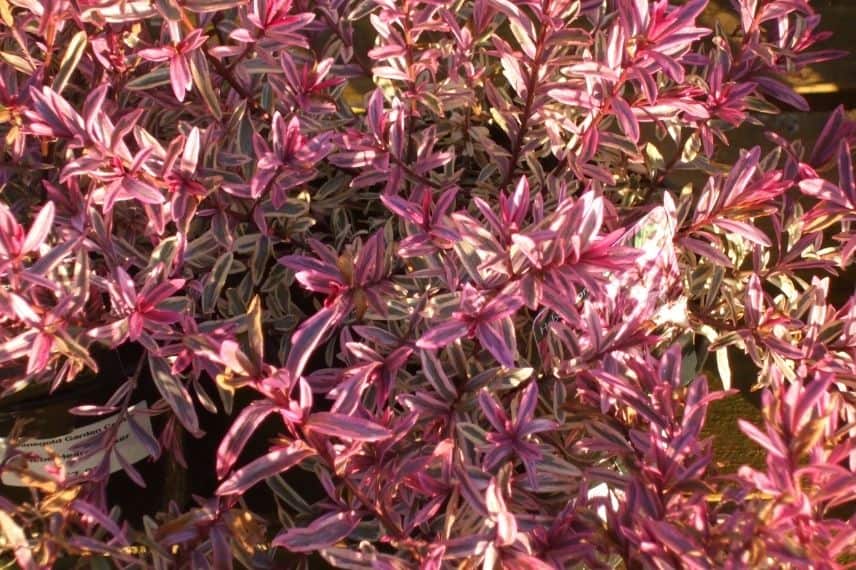
shrubby veronica ‘Heartbreaker’
Discover other Shrubs by flower colour
View all →Available in 1 sizes
Available in 1 sizes
Hibiscus 'French Cabaret Purple'
Hibiscus ‘French Cabaret Purple’ is a shrub renowned for its hardiness, unfazed by heat or cold, and capable of thriving in various locations within our latitudes. However, it will flourish more easily in cool, well-drained soil, under sunny exposure, but partially shaded in the Mediterranean region. It boasts beautiful dense, deciduous foliage that is bright green, sometimes evergreen in warm climates. It produces lovely double flowers with delicately crumpled petals in shades of purple with crimson highlights, blooming late from August to October. Its attractive upright habit can reach 2 metres in height and 1.20 metres in width. This Hibiscus is perfect as a solitary specimen, at the back of a flower bed, or in a flowering hedge, alongside Buddleias or Abelias.

Hibiscus ‘French Cabaret Purple’
Hydrangea macrophylla 'Kardinal Violet'
Hydrangea macrophylla ‘Kardinal Violet’ is a vigorous hydrangea, particularly valued for its beautiful abundant and repeat flowering. From July to October, it produces large flat inflorescences, a lovely purple-violet in acidic soil, turning rather red in neutral soil. Very hardy, it is not afraid of the cold and enjoys fresh, well-drained, ordinary or acidic soil, but not chalky. This hydrangea forms a rounded shrub with bright green deciduous foliage, reaching up to 1.50 m in all directions. It can be planted in a slightly shaded border, alongside a Rodgersia, bush Fuchsias, Cimicifugas, and ferns. With its rounded silhouette, it will be very decorative in a large pot on a terrace or at the entrance of a house and in a flowering hedge.

Hydrangea macrophylla ‘Kardinal Violet’
Lagerstroemia indica 'Violacea'
The Lagerstroemia indica ‘Violacea’ is a beautiful shrub that offers abundant flowering in light violet tones, very bright, from July to September. The flower buds appear reddish-violet, then bloom into mauve, before lightening to white. Its decorative bark also provides a lovely display as it peels in strips, revealing the beige of the tree streaked with brown-red. Its young leaves emerge red in spring, turning dark green in summer, then displaying vibrant colours in autumn before falling.
To flower well, the crape myrtle needs sun and warmth, in rich, cool, well-drained soil, preferably non-calcareous. Hardy down to -12°C, it thrives mainly in the south-west regions. Left to grow freely, its habit is rather bushy, ramified, with a rounded crown, and it can reach up to 4 m in height and 3 m in spread. This variety of crape myrtle can be pruned in various ways, allowing it to be shaped into a shrub for inclusion in a border or hedge, as a standard, or as a small tree. It pairs wonderfully with large asters, a Campanula pyramidalis ‘Alba’, lavenders, and a groundcover rose ‘The Fairy’.
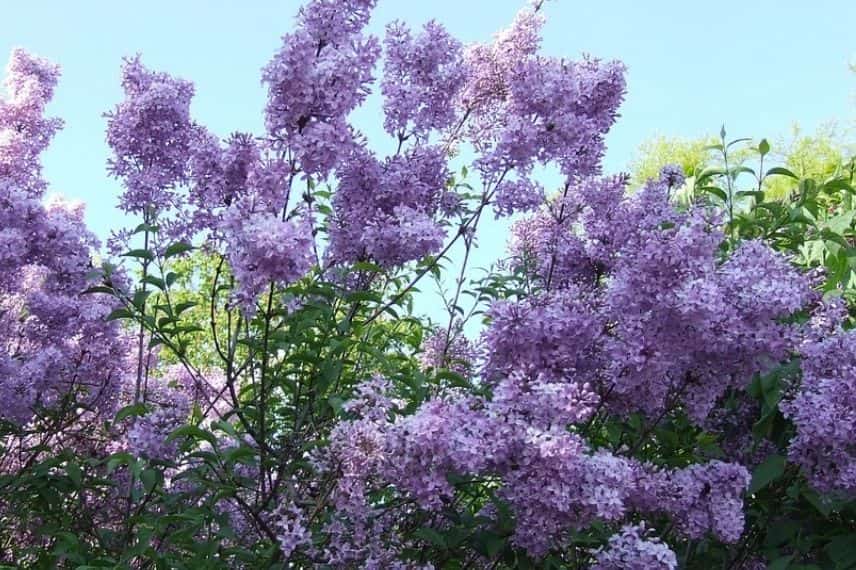
Lagerstroemia indica ‘Violacea’
Rhododendron 'Marcel Ménard'
The Rhododendron ‘Marcel Ménard’ is a beautiful evergreen shrub, with a compact and rounded habit that will make a statement in a heather soil bed. From April to May, its glossy dark green foliage is adorned with large round inflorescences in spectacular dark violet tones. The throat of each flower is maculate with brown-ochre. This lovely specimen will thrive when planted in light, fresh, humus-bearing, acidic, and non-calcareous soil. It prefers a partially shaded location but will tolerate shade and full sun as long as its substrate remains fresh. This Rhododendron will form a lovely shrub, reaching 1 m in height (up to 1.5 m in very good conditions) with a spread of 1.20 m. It will stand out in a shrub bed, alongside a Pieris, a Magnolia, a Mountain Laurel, and a Japanese Maple. It can also be planted alone or in a pot to beautifully adorn a terrace or balcony.

Rhododendron ‘Marcel Ménard’
Magnolia 'Black Tulip'
The Magnolia ‘Black Tulip’ stands out for its stunning spring flowering, featuring an intense purple-violet hue that is rare among Magnolias. It derives its name from the shape of its flowers, which resemble large tulips measuring 15 cm in length. It will add a splash of colour to the garden, heralding the end of winter and the arrival of spring, before being adorned with medium green foliage. This beautiful shrub thrives in full sun or partial shade, in cool, rich, well-drained soil, and sheltered from cold winds that could damage its flower buds. The silhouette of this Magnolia is rather compact and ramified, reaching heights of 2.50 m and a spread of 1.50 m, making it suitable for gardens of all sizes. Reserve a prime spot for it, whether as a standalone feature or at the centre of a shrub bed, formed of Roses, Hibiscus, Rhododendrons, Hydrangeas, and Tree Peonies.
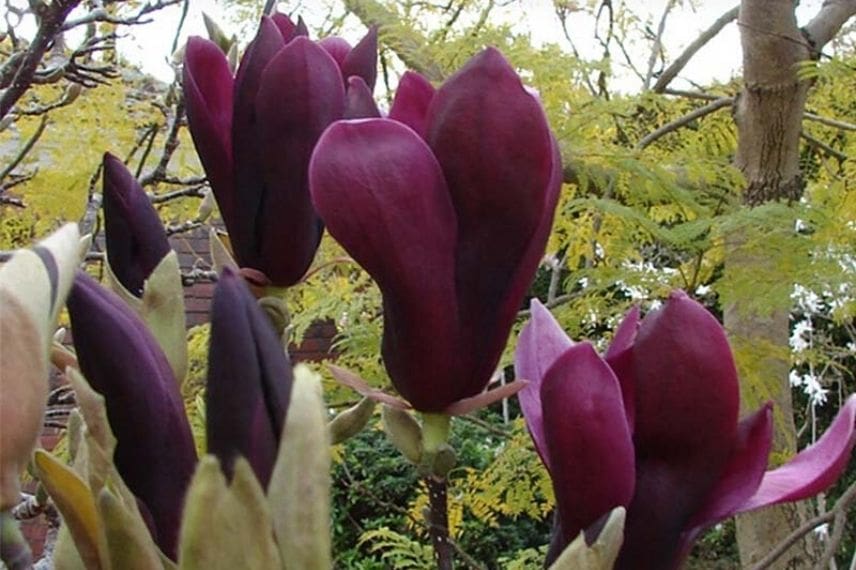
Magnolia ‘Black Tulip’
For further reading
Discover all our purple-flowering shrubs.
- Subscribe!
- Contents
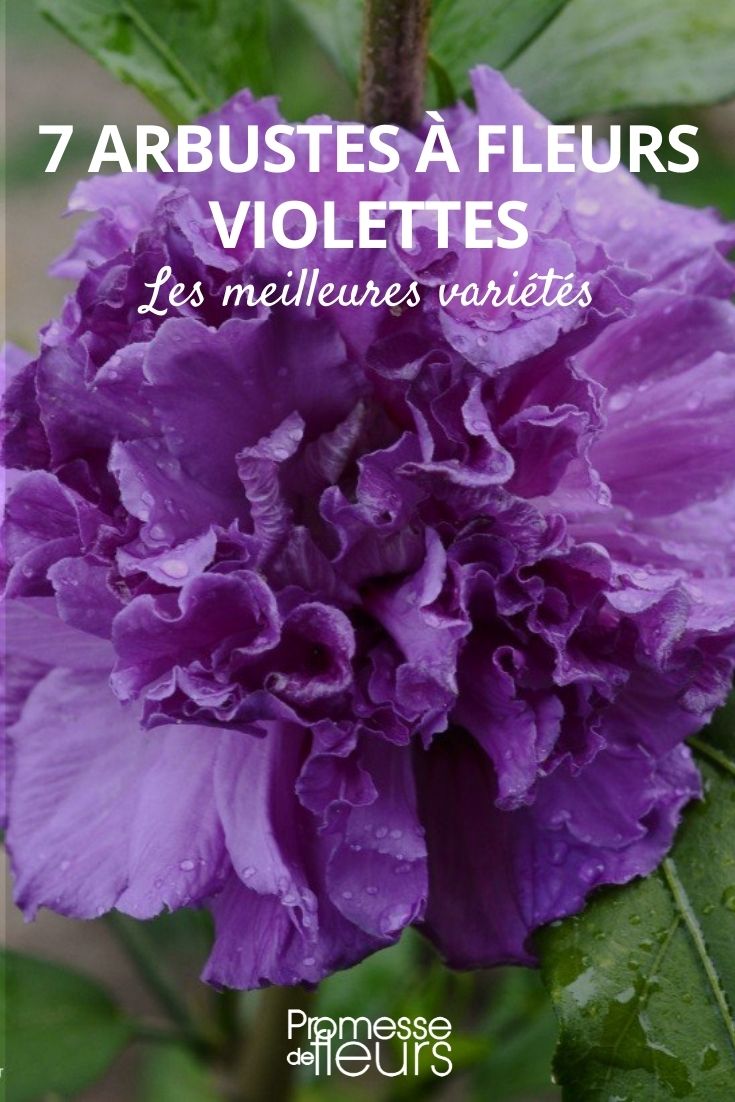































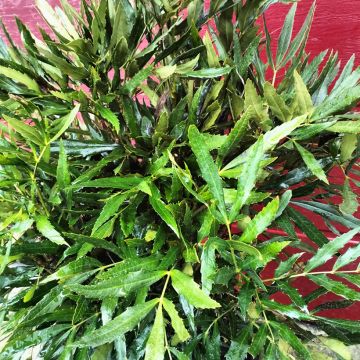
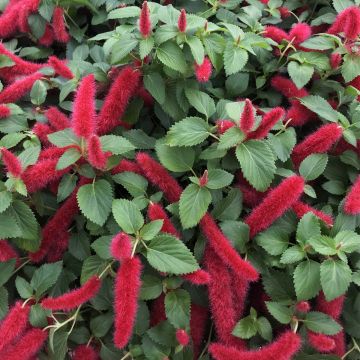
Comments